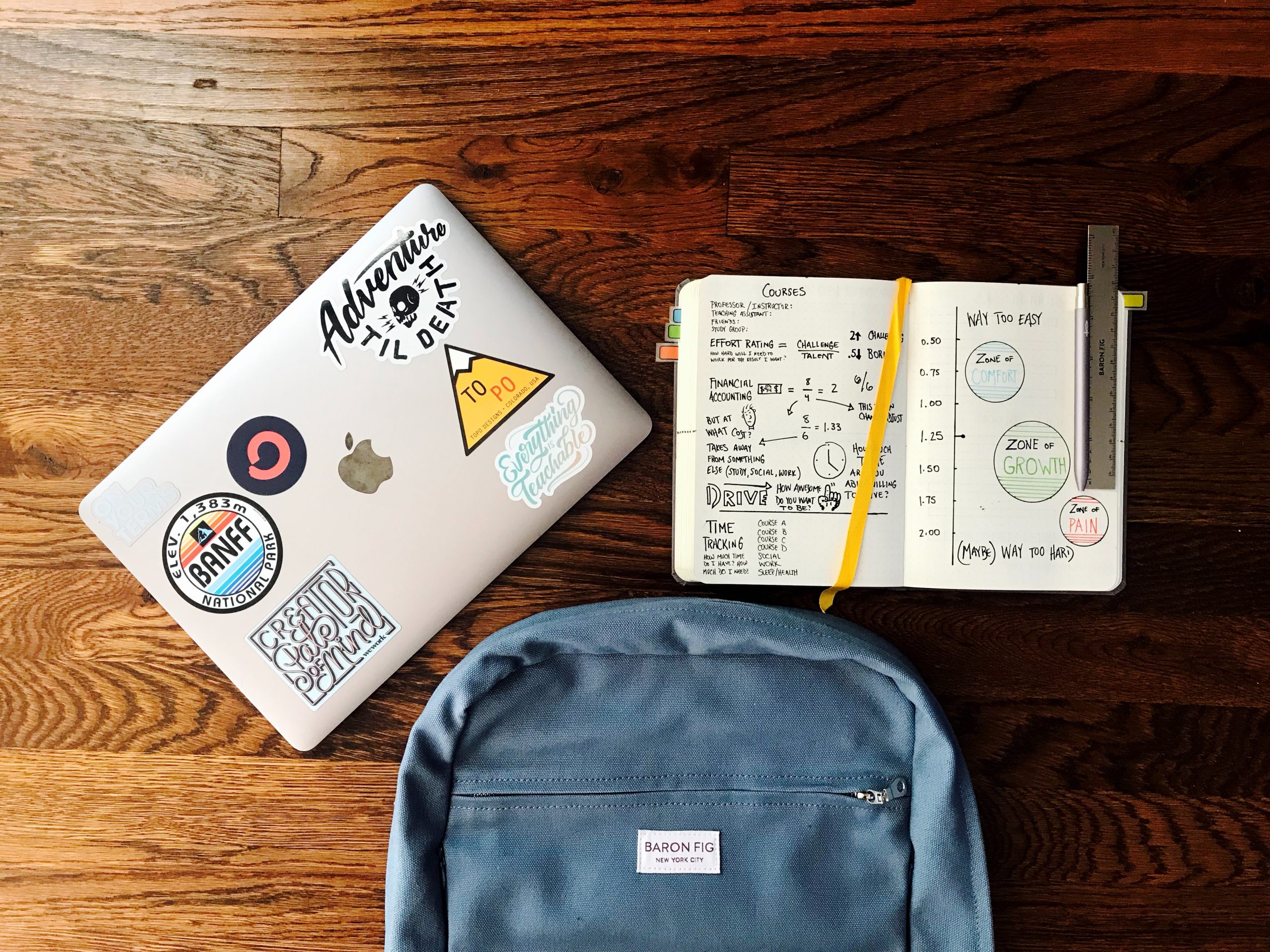How to Support Students with Test Anxiety
Test-taking anxiety is one of the most common sources of stress for students in any school setting. One of the most powerful tools used to measure and assess students’ knowledge is a standardized test.
Standardized testing exists in a few different forms to display what students learned at the end of each course. These vary by state like the elementary school TNAS in Tennessee, the middle school CCSS in Vermont, and the high school ELA SBAC in California. Regarding higher education, standardized assessments such as the Scholar Aptitude Test (SAT) and the American College Test (ACT) are precious for students who are looking to attend college.
With the help of Progress Learning, your students will have access to all the best activities, practice, and resources for teachers and students. Regardless of the student’s year or school district, there are several ways to provide them with methods to reduce their test-taking anxiety.
What is Test Anxiety?
Test anxiety is a type of performance anxiety that explicitly causes a sense of nervousness before a test. The anxiety can vary depending on what the final test grade represents for the test taker. Simply put, the existence of stress is due to the necessity to complete an exam successfully.
What symptoms of test anxiety should you pay attention to in students? There are essentially two categories to help identify when students begin to feel anxious over an exam.
Emotional symptoms can involve:
- Possessing negative thoughts
- Encountering anxiety and depression
Physical symptoms may include:
- Having the fight or flight response, which causes students to either freeze or flee
- Cardiovascular issues could arise when the body releases cortisol
Why Do Students Get Test Anxiety?
Given the importance of tests in educational settings, students naturally experience varying levels of anxiety. This test-taking anxiety stems from the desire and overall expectation to complete the exam with excellent marks.
If your students experience test anxiety, this could negatively affect their performance on the exam, even if they understand the material. On the day of the test, this sudden fear of failure commences. This sensation makes it incredibly challenging for the student to stay focused while they finish the exam.
Strategies to Help Students Manage Test Anxiety
Teachers can routinely aid the anxiety of their students before a test with several strategies. Every student is different, so it is pivotal to keep all of these techniques in mind when positioning students in a test-taking environment.
Prep as Realistically as Possible Given the Test Conditions
Preparation is a crucial strategy to promote the relief of test taking anxiety in your students. Every teacher utilizes a different method when formulating exams for their students, so sharing the format of the test is extremely valuable to any stressed pupil.
Additionally, offer opportunities to take mock exams that resemble what the actual test will include and display, whether during class or after school. Practicing under the exact conditions with consideration to the test’s time length, location, and necessary side materials (pencils, calculator, scratch paper) will enhance the preparedness of your students.
Help Students Determine Where the Anxiety Comes From
Anxiety has a plethora of sources worthy of notation. Typically, your students’ anxiety can stem from being uncomfortable in an environment they routinely feel foreign within. School settings, such as the classroom, often feel polarizing for children.
The unwelcoming environment then makes it more difficult for the student to receive and retain any crucial information shared by the educator. Conducting a discussion with students who express feeling anxious before a test will help determine what parts of the material and testing format are causing feelings of distress and panic.
It is pivotal that anxious students recognize the compassion and caringness of their teachers. Showing your students that you comprehend their conflicting emotions can often lead to a sense of ease if they know you are empathetic.
Other sources of anxiety before a test can include:
- A difficult home environment (the role of a student’s parents is crucial)
- Being bullied at school by their peers
- Lack of sleep
- Hunger
- Student-teacher relationships
- Lack of confidence
- Possessing a learning disability, whether diagnosed or undiagnosed
Help Students Keep Things in Perspective
One of the best ways to relieve students’ anxiety is by reminding them to look at the bigger picture. Not every test requires a perfect score. Many exams are for learning purposes only. These tests are also less about the actual grade and more about measuring how much information the student retained adequately.
Test anxiety often depends on the type of test being administered to the class. The stress occasionally results in a panic attack due to overreaction. Students will routinely treat every test they complete as the end all be all of their school careers.
It is beneficial to emphasize that each test is taken into account in the grand scheme of things. If you make mistakes on a tiny exam, it will not break the rest of the hard work carried out through the rest of the school year.
Furthermore, exams help judge how effectively the teacher prepares and presents the material they share with their class. So, the test is not just about the success of the student as a learner. Testing is also about the success of the teacher as an educator.
Give Students Anxiety-Relieving Strategies
There are several methods to help relieve the physical and emotional sensations linked to stress and anxiety. Provide a comprehensive list of ways to reduce or alleviate anxiety and stress. Consider including anxiety-relieving methods such as:
- Taking slow, deep breaths. There are tons of breathing techniques great for diminishing panic.
- Closing your eyes and slowly count to 10 or 20.
- Find a moment to take a quick time-out. This action can go hand-in-hand with closing your eyes and counting. You could also put in some earphones and listen to relaxing music until it’s time to take the exam.
- Stay positive even if you’re feeling pessimistic. Negativity fuels stress and frequently leads to an undesirable outcome.
- Verbally express to someone you trust that you’re feeling a bit overwhelmed. Keeping your anxiety to yourself could potentially be even more damaging.
- Stay hydrated and try not to skip meals. Small snacks such as nuts, citrus fruits, berries, and even dark chocolate are great brain foods to activate and enhance academic performance.
- Remember that it’s impossible to be perfect, and not everything will be controllable. Always do your absolute best and remind yourself that you gave it your all.
Teach Test-Taking Strategies and Tricks
Once your students absorb all the necessary details to reduce their anxiety, provide them with tips and tricks directly related to taking the exam. Include test-taking methods like:
- Set aside enough time to study independently or with a group of classmates. It is equally essential not to cram before the exam. Overstudying leads to burnout and causes you to forget the information you learned at an accelerated rate.
- Go to bed early the night before the test. Getting an optimal amount of sleep will promote further productivity in time for the exam the following day.
- Read through the whole exam before answering any questions.
- You do not have to start on the first question. Always answer the questions you immediately know the answers to before going through the rest of the exam.
- If the test has a multiple-choice section and you stumble on a question that you do not know the answer to, use the process of elimination.
- Try to focus on the test for the majority of the time. It’s easy to let your mind slip while completing an exam. Remember not to let your mind wander, as that often takes up your valuable time.
- For problem-solving questions, show all of your work! Even if your final answer is wrong, show the teacher what led you to that answer. Many teachers offer partial credit if work is shown.
- Do not be afraid to raise your hand if any of the test instructions or questions seem unclear to you. Asking for further clarification is not against the rules if your question is reasonable.
- If you finish early, read through all of the questions and your corresponding answers to make sure everything sounds as accurate as possible.
Create Study Schedules to Ensure Preparation
Along with offering mock exams for practice, you can provide your students with the necessary tools to carry out their own study sessions. Some professors even make it a requirement for their class to record at least one or two 30-minute study sessions with a tutor or other students.
If you can ensure that your students are studying the optimal amount before an exam, they will inevitably be far less anxious than they would be if they chose not to study at all. Some excellent study skills to keep in mind include:
- Preparing a checklist of subjects to review. It also helps to highlight or circle any material that seems particularly unclear.
- Create a calendar to separate your study time from your leisure time, so they do not collide.
- If possible, pick a study spot that resembles your testing environment.
- Always remember to praise or treat yourself after a successful study session. Completing even basic tasks can take up lots of energy.
One way to keep a study schedule is to use tools like Progress Learning tools to build confidence through practice and engaging activities throughout the year.
Remind Students to Accept When They Do Not Know Something
If your student gets stuck on a question, it’s not unlikely that they’ll sit for ages in an attempt to understand the material before moving on.
It’s crucial to reassure your students that they simply will not remember everything. It’s also not normal to know or memorize every little piece of information provided. You have to recognize when you do not know the answer or know what path will lead you to the correct answer.
Do not waste more precious time that could be used to answer the questions that you actually understand. It might also be helpful to sketch a visible star next to the questions you couldn’t find the answer to during test prep. This action lets the teacher know precisely where you struggled, giving them a chance to emphasize that specific material in their future lectures.
Focus on Progress Over Perfection
Many students suffer from perfectionism. The education system often feeds into the idea that being as close to perfection as possible is the best way to achieve your goals. This notion simply is not valid.
As long as you are making progress, you do not need to be academically perfect. Making mental notes of every new piece of information you successfully gained is a great confidence booster.
Record the information that seemed difficult to grasp the first time around and come back to it after a few formal study sessions to see if your knowledge on the topic has grown.
Teachers should also recognize the value of their students’ progression. Highlighting progress over perfection displays that your students actually care to learn the material properly.
Find Reasonable Accommodations Where Necessary
Accommodating students where necessary is exceptionally vital. Typically students with documented learning disabilities will already have specific accommodations in place that the teacher receives before any tests are administered. For all other students who simply suffer from severe stress or anxiety, consider this list of ways to accommodate your panicking pupils reasonably:
- Offer separate testing environments where they can complete the exam in a room alone or with a small group of people present.
- Provide extra time to complete the exam or offer an altogether untimed exam.
- Allow the students to complete the test with a proctor or supervisor with whom they hold a sense of familiarity.
- Prepare a shortened version of the test.
- Give them an alternate option to assess their knowledge—for example, an essay, project, or oral presentation.
Test Prep Materials for Each Test and Each State from Progress Learning
Progress Learning offers many resources for teachers to better assist them in educating their students. These materials are suitable for a variety of age groups all across the United States.
Anxiety is a normal part of any student’s educational journey, but there are ways to lessen it and make it more manageable for the student and educator alike.


